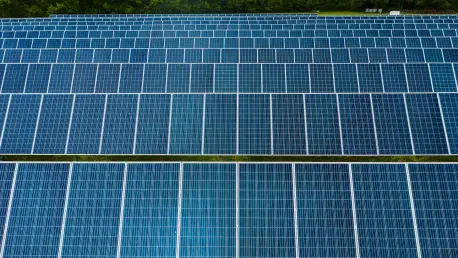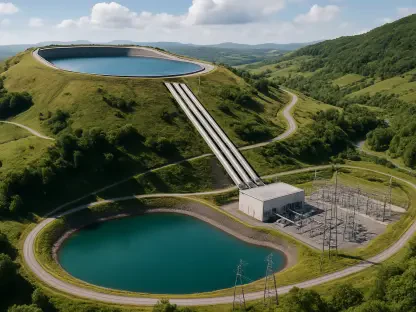As solar energy becomes an integral part of global energy solutions, the digitization of infrastructures introduces a pressing issue: cybersecurity. With over 35,000 solar power devices connected to the internet, a report by Forescout highlights their potential vulnerabilities. These devices, belonging to 42 companies, can be critical components of solar infrastructure. While some have password protection, Forescout underscores that many do not need online access. When online access is necessary, robust security measures such as VPNs are recommended. This report leads to a broader question—how can an industry at the forefront of sustainable energy ensure the security of its digital assets?
The Necessity and Risks of Interconnected Solar Infrastructures
Balancing Benefits and Vulnerabilities
The interconnectedness of digital infrastructures in solar energy presents both remarkable benefits and significant cybersecurity risks. The transition to renewable energy has accelerated the digitization of infrastructures globally, leaving them susceptible to cyberattacks when design and security considerations fall short. Devices like those used in solar farms offer improved efficiency and real-time data management. However, their open accessibility makes them targets for cybercriminals, posing threats not just to companies but to broader energy grid stability.
This duality is accentuated by the lag in addressing known vulnerabilities. Reports suggest that prominent vendors with exposed devices have had vulnerabilities disclosed but insufficiently addressed over several years. The persistence of these vulnerabilities is particularly alarming, considering the substantial impact a cyberattack could have on energy distribution and supply. This underscores the necessity for the energy sector to integrate more informed and proactive cybersecurity measures tailored to renewable infrastructures. As technology rapidly evolves, so must the strategies to secure these systems against potential breaches.
Geographic Disparities in Device Exposure
A notable detail from the Forescout report is the regional distribution of exposed solar power devices, with Europe and Asia experiencing heightened vulnerabilities. In Europe, countries like Germany and Greece are significant hosts to these devices. Meanwhile, Asia’s significant portion of exposed devices contributes to an increasingly complex cybersecurity landscape. This regional exposure is not random; it reflects the varying degrees of digital adoption and regulatory frameworks across these regions. While Europe and Asia are at the forefront of solar power deployment, the technological growth lacks a parallel in stringent cybersecurity practices.
Such disparities highlight the pressing need for unified, global cybersecurity standards. This variation in exposure is not merely a function of numbers but of the cybersecurity strategies—or lack thereof—adopted by different regions. By understanding the causes behind this uneven distribution, stakeholders can devise more efficient strategies to mitigate risks. International cooperation and knowledge sharing in cybersecurity practices could facilitate more equitable protection measures across borders, ensuring that progress in renewable energy is matched with cybersecurity resilience.
The Vulnerability of Legacy Devices and the Persistent Threats
Legacy Devices: A Lingering Challenge
Significant players in the solar power market, like SMA and Fronius International, have struggled with the exposure of older devices like Sunny WebBox, which was discontinued in 2015. Despite its discontinuation, the device remains frequently exposed, largely due to a vulnerability disclosed nearly a decade ago. This vulnerability drastically affected the number of online devices, yet the subsequent resurgence of exposed devices highlights a critical oversight in device management. The lifecycle of these devices suggests that even after being phased out, they continue to pose security challenges if not properly managed.
Such legacy devices are often left online inadvertently, either due to a lack of awareness by operators or inadequate management protocols. Their persistent online presence without adequate updates or protection makes them attractive targets for cyber attackers. This situation illustrates the importance of updating and replacing outdated technology infrastructure within the renewable energy sector. Effective retirement and replacement strategies, along with ongoing vigilance, are essential to close the doors that legacy systems leave wide open.
Intensifying Threat Landscape
The risk exposure from internet-connected solar infrastructures cannot be overstated. Experts in the cybersecurity field warn against the rise of aggressive threat groups targeting these systems. Rob Lee from Dragos underscores the value of connectivity while emphasizing the necessity for a robust, “assume-breach” mindset. This approach prepares organizations for the inevitability of attempted breaches, focusing resources on detection, response, and containment strategies. Such proactive stances become indispensable as the sophistication of cyber threats increases.
As the energy sector digitalizes, communication mapping and asset visibility become paramount. Gary Kneeland from Claroty points out the importance of understanding device interactions within complex infrastructures. Without this insight, effectively managing and securing these devices becomes nearly impossible. As assets digitalize rapidly, vulnerabilities that might seem minor can rapidly escalate into significant threats without holistic cybersecurity measures that incorporate both preventative and responsive strategies. This evolving threat landscape demands adaptive measures and an informed, agile security posture.
Navigating the Future of Energy Infrastructure Security
Bridging Gaps with Innovative Strategies
For the renewable energy sector, ensuring the cybersecurity of solar power infrastructure requires systemic change. The need to secure devices from cyber threats is a challenge with direct implications for the reliable operation of energy grids. Forescout’s insights underscore the intricate challenges faced in safeguarding these infrastructures. Addressing these vulnerabilities necessitates innovative strategies focusing on asset visibility, effective device management, and adopting emerging security technologies.
It’s crucial for stakeholders to recognize that cybersecurity is not a static issue. As the industry continues to evolve, so must the strategies employed to protect it. Collaboration across industry sectors and nations can pave the way for dynamic solutions adaptable to emerging threats. Such strategies must include real-time monitoring, intrusion detection systems, and continuous updates to security protocols. By transcending traditional protective measures, organizations can better anticipate, identify, and neutralize threats before they cause harm.
Proactive Security Measures for Resilient Systems
As solar energy becomes a cornerstone of global energy strategies, the rise in digital infrastructure presents a critical challenge: cybersecurity. A Forescout report highlights the potential vulnerabilities of over 35,000 solar power devices now connected to the internet. These devices, hailing from 42 different companies, are vital components of solar energy systems. While a few are safeguarded with password protection, Forescout stresses that numerous devices should not require online access. However, when such access is unavoidable, implementing strong security measures like Virtual Private Networks (VPNs) becomes paramount. This raises a larger issue: how can an industry dedicated to sustainable energy protect its digital assets from cyber threats? As the world increasingly relies on solar power, ensuring rigorous cybersecurity practices is crucial. The challenge lies in balancing innovation in green technologies with robust protective measures, ensuring both the efficiency and safety of digital solar infrastructures.









